[box]
Friends –
We’ve had a fast-paced start at the Coalition for Smarter Growth in 2015! In addition to our advocacy for walkable and inclusive transit-oriented communities, we’ve had to launch a major campaign to defend and save transit investments in the DC region. The situation for transit is quite worrisome, and threatens the region’s ability grow sustainably.
Your involvement and your donations – 27 percent of our budget comes from individual donors like you — are what make it possible for us to carry on the fight for smart growth and transit. Thank you.
The updates below highlight our top activities, but please contact us with any questions or to find out more about how you can help.
Sincerely,
Jump to: Defending the Purple Line | WMATA service cuts and fare hikes | DC streetcar and the future of transit investment in DC | I-66 | Inclusionary zoning in DC | Housing at Takoma Metro station | Alexandria smart growth | Walkable Seven Corners in Fairfax
[/box]
Defending the Purple Line
[pretty] [/pretty]
[/pretty]
Despite years of study and design, and a viable funding plan, the Purple Line is threatened with cancellation by Maryland’s new Governor, Larry Hogan. The Governor has indicated he favors new highway construction over transit investments.
In concert with our allies, the Coalition for Smarter Growth has been leading the charge to preserve this transit project that is so important for revitalizing inside-the-Beltway communities, connecting people to jobs, providing an alternative to traffic-choked roads, and better connecting the University of Maryland to the rest of Prince George’s and Montgomery Counties.
We’ve been speaking to the press non-stop about the economic value of the investment, generated hundreds of emails, partnered with the business community to engage their members, and organized a “Transit Night” in Annapolis where nearly 200 supporters visited their legislators to show the deep reservoir of support for the project. The inspiring evening included the Board of Trade, smart growth supporters, and social justice advocates at a press conference with over a dozen local and state elected officials. Our recent op-ed in the Washington Business Journal countered a leading transit skeptic who has long been funded to derail transit projects around the US.
We expect Governor Hogan to make a decision about the project in May, and will not let up on our campaign. [clear][/box]
WMATA service cuts and fare hikes
[pretty] [/pretty]2015 has not been an easy year for Metro, but this February’s proposal to raise fares and cut service – including frequency on key bus routes and rush hour train service – would have made it many times worse for people across the region who depend on Metro to get around.
[/pretty]2015 has not been an easy year for Metro, but this February’s proposal to raise fares and cut service – including frequency on key bus routes and rush hour train service – would have made it many times worse for people across the region who depend on Metro to get around.
Concluding that state and local governments should do more to support this important public service, we swung into action, alerting Coalition for Smarter Growth supporters like you, and generating over 300 emails to the WMATA board and local elected officials. The emails, and our testimony, helped convince the Board to drop the fare increases and most of the service cuts. Nevertheless, we know WMATA needs a stronger, more sustainable funding model to meet funding needs, and the commitment of federal, state and local officials to address its challenges. We’ll be very focused on these issues through the rest of 2015. [clear][/box]
DC streetcar and the future of transit investment in DC
[pretty]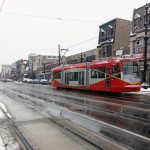 [/pretty]There is no doubt that the planning and design process for DC’s first streetcar line in two generations has been less than ideal. But we firmly believe that the H Street/Benning line should be opened – after a thorough operating review – because of its value to a more sustainable, walkable city.
[/pretty]There is no doubt that the planning and design process for DC’s first streetcar line in two generations has been less than ideal. But we firmly believe that the H Street/Benning line should be opened – after a thorough operating review – because of its value to a more sustainable, walkable city.
Therefore, when Acting District Department of Transportation (DDOT) Director Leif Dormsjo would not commit to opening the H Street streetcar, we organized over 275 emails to Mayor Bowser favoring opening the line and calling for dedicated lane transit to remain a top DC transportation priority.
We had good news – following our campaign and a report by an expert panel at the American Public Transit Association, the Mayor decided to move forward with the streetcar! We will monitor the situation and continue making the case that transit investment – especially dedicated lane transit in key corridors – must be a top DC focus for the future.
[clear][/box]
I-66
[pretty]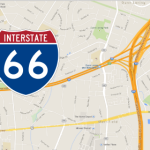 [/pretty]We agree that I-66 urgently needs fixing, but VDOT never studied a transit and smart growth alternative for the highway outside of the Beltway, focusing instead on moving forward with High Occupancy Toll (HOT) lanes under another private toll road deal like those on I-495 and I-95.
[/pretty]We agree that I-66 urgently needs fixing, but VDOT never studied a transit and smart growth alternative for the highway outside of the Beltway, focusing instead on moving forward with High Occupancy Toll (HOT) lanes under another private toll road deal like those on I-495 and I-95.
The McAuliffe Administration has said that it will make transit — both express commuter bus and reserved right-of-way for Metrorail — a core part of the HOT lanes project. But it’s not clear where the transit funding will come from.
That’s why we believe other options, including a less costly transit-first option with a single dedicated transit and HOV-3 lane in each direction should still be on the table. We’ve met with VDOT, written to the Virginia Secretary of Transportation and mobilized emails from our members, and on March 25 we’re co-sponsoring a Fairfax community forum to hear from the public. For inside-the-Beltway, the plan is much better and has earned our support. It involves publicly-owned, peak-hour HOT with HOV-3 in both directions, with the revenues going to transit in the corridor.[clear][/box]
Inclusionary Zoning (IZ) in DC
[pretty]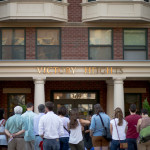 [/pretty]
[/pretty]
Addressing DC’s affordable housing crisis will require a variety of tools from the policy solution toolbox. IZ is one of those solutions that we have long led the way on.
Under IZ developers can build additional units in residential projects in exchange for a guaranteed percentage of units available for lower income families This is a great way to use our booming real estate market to add to our dwindling supply of affordable apartments.
We are working with partners this year to make sure this important program can help even more families, by lowering the maximum income eligibility level, in exchange for an even greater bonus density. We organized a sign-on letter to the Mayor and the Zoning Commission, and are working to win a resolution of support from the Council. [clear][/box]
Housing at Takoma Metro
[pretty]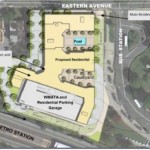 [/pretty]
[/pretty]
As you know, more and more people want to live near Metro. This desire is a positive thing for our region, ensuring that we grow sustainably, reducing the amount we drive and household transportation costs while cutting air pollution and greenhouse gas emissions. But increased demand leads to increased prices so it’s important that we work to increase the supply of well-designed transit-oriented development near Metro stations. One important project we’re supporting is at the Takoma Metro station where WMATA and DC are considering a proposal for a 200-unit multifamily building on top of a parking lot.
We’ve reviewed and helped to enhance the proposal, communicated to our members about the benefits, convened a local happy hour that allowed us to converse with those on all sides of the issue, launched a petition drive, and have been organizing supporters to speak out in favor at the WMATA hearing and vote scheduled for March 26. Following WMATA approval, the project will go before DC’s Historic Preservation Review Board and Zoning Commission, where the public will have additional opportunity to offer input on the design and other issues.[clear][/box]
Alexandria smart growth [pretty] [/pretty]
[/pretty]
We are supporting local residents in Alexandria as key initiatives move forward, including the update to the Pedestrian and Bicycle Master Plan, and proposed development of the Braddock Metro Station parking lot. Alexandria has a terrific opportunity to become an even more pedestrian and bicycle-friendly city, so we’re promoting public involvement in the update to the Pedestrian and Bicycle Master Plan. To learn more, please view this progress report compiled by city staff in February.
We are also meeting with WMATA, the city and local residents in evaluating design options for the Braddock Metro site in preparation for the next round of public outreach later this year.
[clear][/box]
Walkable Seven Corners in Fairfax
Fairfax County has developed a draft plan for a walkable, mixed-use, mixed-income community in the aging Seven Corners commercial hub. We participated in task force meetings last year, and made the case for this smart growth investment to the first public hearing this year on the draft plan.
We are continuing our review and input as the plan is readied for presentation to the Planning Commission and Board of Supervisors.[clear][/box]


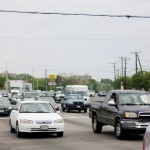 [/pretty]
[/pretty]